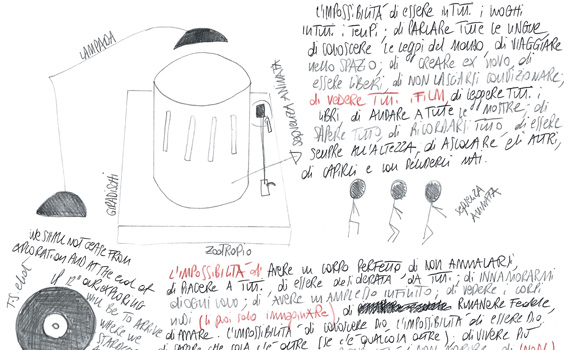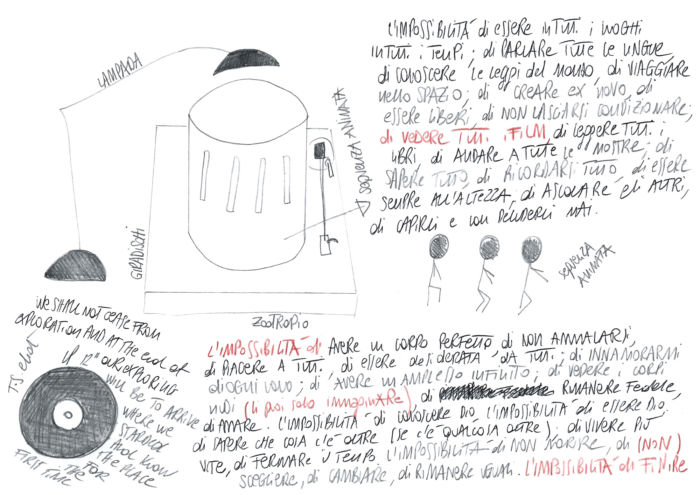In the project titled “Loop”, the artist revisits devices from the archaeology of cinema, such as zoetropes, praxinoscopes, and magic lanterns, which enable the viewing of moving images. These instruments are based on the repetition of a sequence of photographs and represent an action that is continuously reiterated, allowing stories to be told with just a few moving frames. Repetition is considered a constitutive element of existence, both in biological and historical terms, and is linked to intrinsic paradoxes of human nature. The loop, seemingly just a technical limitation, thus becomes a narrative engine (Manovich, 2001), as in the case of the four-channel video “E non ti raggiungevo mai” [“And I Could Never Reach You”] – inspired by Marcel Duchamp’s “Nude Descending a Staircase No. 2” (1912) – in which the artist endlessly goes up and down the stairs.
In the case of the zoetropes, from a technical perspective, the sequence is created by isolating and extracting frames from a digital video that resemble the chrono-photographic experiments carried by Eadweard Muybridge. Additionally, the use of the turntable is tied to the recovery and re-enactment of old technologies, which, in this context, are deprived of their primary function and transformed into mere motion generators. “Tutto qui” [“That’s All”] is Eleonora Roaro’s first zoetrope and, in minimalist aesthetics, represents the cycle of life: birth, reproduction, and death. The LP used as the base for the zoetrope is Franco Battiato’s “Fetus” (1972), featuring an image of a fetus, thus forming a conceptual connection to the photographic sequence. “Achille amava la signoraTartaruga, infinitamente” [“Achille Used to Love Mrs. Turtle, Endlessly”] is a reinterpretation of Zeno’s paradox of impossibility of motion, which ironically becomes a metaphor for desire.

